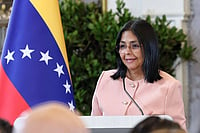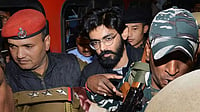EXCEPT for the rss and other extreme Hindu right-wing groups, most people in India and abroad welcomed Prime Minister Vajpayee's ceasefire in Kashmir. Any peace initiative that reduces violence in this troubled region is a positive sign. But in a way, India seems to have walked into Pakistan's trap.
Clearly, a degree of ceasefire is being honoured by Indian and Pakistani armies. Senior Indian army officials and the j&k chief minister have publicly stated that violence has come down along the Line of Control. But both admit violence has gone up in the Valley during the ceasefire. Kashmiri militants have conducted deadly car bomb explosions and even suicide attacks. They even masterminded a successful commando operation in the Red Fort, right in the heart of the Indian state. In other words, attacks by Kashmiri militants have been both intensive and extensive, despite the fact that violence along the border has decreased.
India has consistently accused Pakistan of indulging in 'cross-border terrorism'—arming, funding, training Kashmiri militants within Pakistan and then exporting them to the Valley. India says gunbattles along the border between Indian and Pakistani armies have risen sharply in the past decade because of the infiltration of militants into the Valley—Pakistan provides cover fire to enable the militants to cross over, which forces India to return fire. Indian army officials say Pakistan's tactic is to open fire in one area on the border and engage the army unit located in the vicinity, so that several kilometres away a batch of militants can escape into India.
Usually, infiltration is the highest just before snow obstructs the passes. Passage is impossible from late December to April. And because infiltration peaks just before the passes close, border clashes between India and Pakistan too rise. But due to the ceasefire this time there were hardly any clashes. Also, when passes become snowbound, infiltration takes place along the Jammu sector. This time, there is peace along this sector too. Which means infiltration is minimal. But violence within Kashmir has risen.
What does that suggest? That prima facie, the two are not linked. Objectively, doesn't that lend weight to the Pakistani position that the Kashmiri uprising is not exported from Pakistan; that this is an indigenous conflict, a political problem manifested in a violent ground situation that India is not attending to?
India and Pakistan use events entirely for propaganda. They shadow-box and when both play games, truth gets lost. The truth is that Pakistan is doing in Kashmir what India's done in Sri Lanka. But such policies boomerang and hurt the perpetrator as much as the victim. Pakistan ought to learn from that experience and realise their backing of the Kashmiri jehad will harm them as much as it will India.
But both nations are too busy playing to the gallery—not domestic, but international. Both are out to win brownie points with the US and Europe. In that process, if they offend some domestic lobbies, so be it.
In the PR game being played by both countries vis-a-vis the international community, India is way ahead of Pakistan—because of Vajpayee's declared good intentions (which he first demonstrated with the Lahore process) and Pakistan's misadventures such as Kargil. Besides, the Americans, Japanese and the Europeans are far more interested in a peaceful India with a growing market than an unstable Pakistan with a failing economy. In today's geopolitics, it serves India's national interests to press ahead with every advantage.
But so will Pakistan. They now realise that there are few international takers for intrusions, aggressions and 1,000-year wars. That's why Pakistan beats India when it comes to conciliatory gestures: observing 'maximum restraint' and even pulling back troops from the border. The goodwill gesture has already yielded dividends; violence has decreased along the border. But to India's discomfiture, that has not mitigated the Kashmir problem. In fact, the insurgency appears to have intensified. Now that India has walked into its trap, Pakistan will press its advantage further. It will use the upturn in Kashmir violence to buttress their long-standing demand for settlement and exonerate themselves from culpability in the Kashmir conflict. Indian officials will then come up with an ingenious counter-argument to neutralise Pakistan's advantage.
Both will still be only playing games. Kashmir is too serious to be played around with and even more serious to be solved. What both nations can do is to reduce the levels of violence and strive for a new peace initiative that coaxes the two nations to embark together on a difficult journey, one that narrows the differences, if not bridge them.
That journey must begin soon as this is a historic opportunity. How many times have we said that before! Like history, historic opportunities too seem to repeat. There was a historic opportunity when Indira Gandhi and Zulfiqar Bhutto were at the helm, there was another when it was Rajiv Gandhi and Benazir Bhutto and yet another when it was I.K. Gujral and Nawaz Sharif. But then, optimists must grab the silver lining, however dark the cloud may be.
This is a historic opportunity to pursue peace precisely because we have hardliners in power in both countries. The bjp here is pitted against the army ceo there. Both know the unfeasibility and perils of war. And both have the power and the domestic support to stretch the elasticity of their country's position to the maximum...and the more they extend, the narrower the difference. The two can thus bring India and Pakistan as close as the two nations can ever be. That is of course assuming both want to and have the courage to compromise. Otherwise, we'll just have to wait for more violence, new traps, another propaganda if not a real war, and then perhaps, another historic opportunity.
(The author can be contacted at anitapratap@journalist.com.)
Games Nations Play
While violence along the LoC has fallen,militant activity within Kashmir has risen. Pakistan is pressing that advantage.

Games Nations Play
Games Nations Play
Published At:
MOST POPULAR
WATCH
MORE FROM THE AUTHOR
PHOTOS
×





















